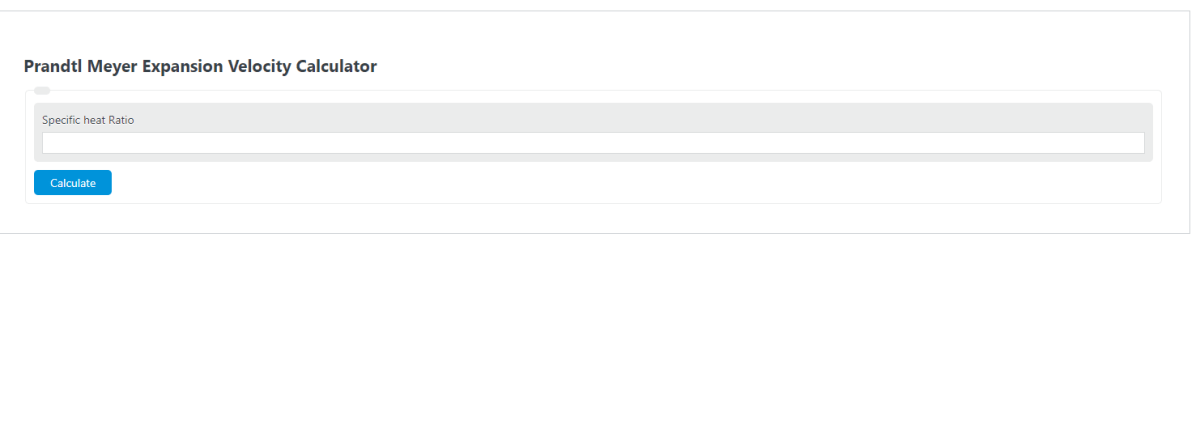Enter the specific heat ratio into the calculator to determine the maximum velocity using the Prandtl-Meyer expansion formula.
Prandtl Meyer Expansion Velocity Formula
The following equation is used to calculate the Prandtl-Meyer Expansion Velocity.
Vmax = pi/2 * (SQRT((y+1)/(y-1))-1)
- Where Vmax is the maximum velocity
- y is the specific heat ratio.
What is a Prandtl Meyer Expansion Velocity?
Definition:
The Prandtl Meyer Expansion fan is a two-dimensions simple wave that occurs when supersonic flow turns around a convex corner.
How to Calculate Prandtl Meyer Expansion Velocity?
Example Problem:
The following example outlines the steps and information needed to calculate Prandtl Meyer Expansion Velocity.
First, determine the specific heat ratio. In this example, the specific heat ratio is found to be 1.45.
Next, the final and last step is to calculate the maximum velocity using the formula above:
Vmax = pi/2 * (SQRT((y+1)/(y-1))-1)
Vmax = pi/2 * (SQRT((1.45+1)/(1.45-1))-1)
Vmax = 2.0943
FAQ
What is the specific heat ratio and why is it important in calculating Prandtl Meyer Expansion Velocity?
The specific heat ratio (denoted as “y” in the formula) is a dimensionless number that represents the ratio of the specific heat at constant pressure to the specific heat at constant volume. It is crucial in calculating the Prandtl Meyer Expansion Velocity because it affects the speed of sound in the medium, which in turn influences the maximum velocity achievable in a Prandtl Meyer expansion scenario.
How does the Prandtl Meyer Expansion apply to real-world engineering?
The Prandtl Meyer Expansion is particularly relevant in aerospace engineering, where understanding the behavior of supersonic flows around aircraft wings or in jet nozzles is essential. It helps engineers design more efficient and safer aircraft by predicting how supersonic flows will expand and turn around objects, which is critical for minimizing drag and ensuring stability at high speeds.
Can the Prandtl Meyer Expansion Velocity formula be used for any type of fluid?
The Prandtl Meyer Expansion Velocity formula is specifically designed for use with ideal gases in supersonic flow conditions. Its accuracy for liquids or non-ideal gases is limited because these materials do not strictly adhere to the assumptions made in deriving the formula, such as constant specific heats and the absence of viscous effects. For these materials, more complex models and simulations are typically required.
